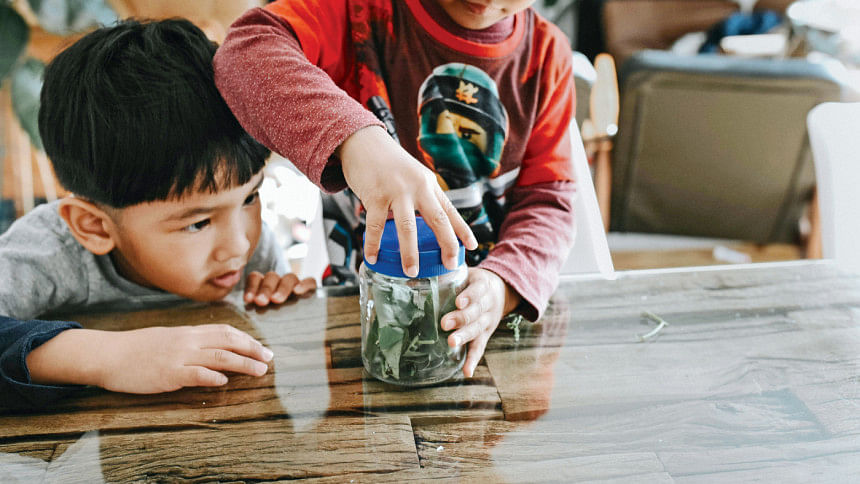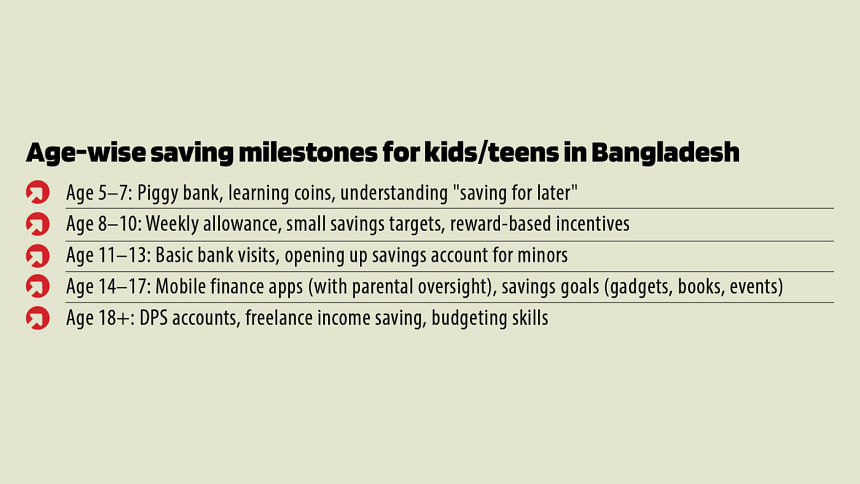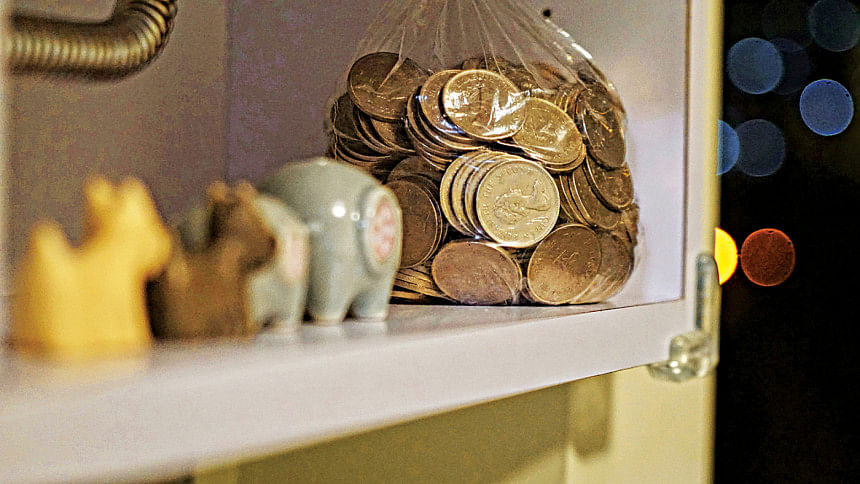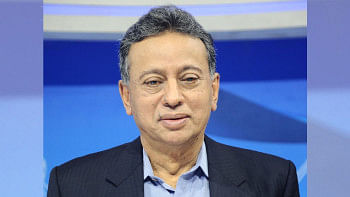Why saving money from an early age could be the best gift you give your child (or yourself)

Ever caught yourself saying, "If only I had started saving earlier…"?
Yeah. We all have. And that little regret right there? That's why saving money from an early age matters—whether it's helping a child understand value, guiding a teen toward better choices, or even trying to fix our own habits as adults.
Saving may sound boring next to all that dopamine-spiking spending. But done right, it's actually a confidence booster, a planning tool, and a secret weapon for smarter living. In today's Bangladesh, a single tap on your mobile finance app and half your salary disappears on food delivery. Flashy phone ads glare down from every Dhanmondi billboard. Learning to save isn't just smart—it's survival training.
What the science says
A Cambridge University study found that by age seven, children already form money habits they'll carry into adulthood. Think about that—your kindergarten-going child might already be hardwired to either save or splurge.
Meanwhile, research from the University of Kansas showed that kids as young as five understood the concept of delayed gratification. In one experiment, children were asked to choose between one candy now or two later. Many were willing to wait. That's the seed of saving right there.

More than just taka in a tin
For many of us, saving started with a humble tin coin box—or those clay banks that were more fun to smash than to fill. It wasn't about interest rates or retirement plans. It was about holding on to money long enough to get something bigger, better, later.
That's still the foundation. But today, saving tools have evolved. For older teens already using mobile devices, digital finance apps can help reinforce these habits. Some platforms now offer auto-saving, monthly reminders, and even cashback-based incentives.
That said, for younger children, it's best to keep things offline. A jar full of coins, a family savings chart, or a sticker-based goal tracker can do more good than a screen ever could. The key is to make saving feel visible and doable.
Parents make the best teachers (even if we're still figuring it out)
If you want your kids to understand money, don't just tell them—show them. Let them watch you withdraw cash from an ATM and explain where that money came from. Show them your bank app and walk through how you track expenses. Talk about saving goals, even if it's just setting aside a bit for groceries or bills.
Many banks in Bangladesh now offer school banking services and special savings accounts for minors that are managed by parents till the children are 18. These schemes are designed to help kids grow money discipline, and they often come with zero fees and basic financial education.
Next Eid, instead of letting your child spend all their salami on toys and chips, try guiding them to save a portion. You could even promise a bonus or a family treat once they reach a target. It's about building habits, not withholding joy.

What saving really teaches
Here's what kids (and honestly, adults too) gain from learning to save:
Mental discipline: Learning to wait, prioritize, and make smarter choices.
Planning skills: Understanding how to work toward a goal, one step at a time.
Financial resilience: A saver is less likely to fall for scams or land in debt.
Confidence: Knowing they're in control, even with small amounts.
Tips for teen and young adult savers
If you're in your late teens or just earning your first paycheck, saving can still be part of your story. Try these:
- Save first, spend later. Don't wait to see what's left—move money the moment you get paid.
- Automate savings using your financial app. Out of sight, out of temptation.
- Try the 50-30-20 rule: 50% for needs, 30% for wants, 20% for savings.
- Set up a DPS (Deposit Pension Scheme) account—it's a solid way to ensure we lock away a preset amount for a set number of years.
- Track your spending. Even your cha-and-fuchka routine adds up fast.
Making saving fun (Yes, even for kids)
You don't have to turn into a mini financial planner. Just make it a game.
Set a monthly savings target. For example, save BDT 500 this month and we'll grab some street fuchka or go for a simple cold drinks & snack outing. The treat doesn't have to be big—it just has to feel earned.
Offer small incentives. "Save part of your Eid gift money and I'll match it." I tried this with my teenager who was eyeing a game controller. Not only did he agree to save—he upped the goal for an even better one. That's progress.
With my younger child, I use stickers and a savings poster. Every coin saved earns a sticker. When the chart's full, he gets to choose a little treat.
The key is to give them a sense of control. Even if it's a tiny amount, knowing it's theirs makes all the difference.
Pro Tip: Next Eid, instead of letting your child spend all their salami on toys and chips, guide them to save a portion. Maybe they get a reward later when the account hits a goal. Small steps, big impact.
Final words: Start Small. Think Big.
The earlier someone starts saving, the more powerful the habit becomes. Not just because of interest or returns—but because of mindset. In a country where economic uncertainty is common and money talk isn't always part of the school curriculum, teaching kids to save might be one of the most useful lessons we can pass on.
So whether it's a clay coin bank, a DPS account, or a promise to match their next BDT 100 in savings—start where you can. Because every small act of saving is a step toward their strength, stability, and confidence in the real world.

 For all latest news, follow The Daily Star's Google News channel.
For all latest news, follow The Daily Star's Google News channel. 




Comments